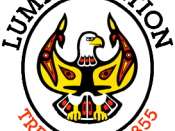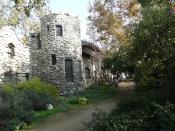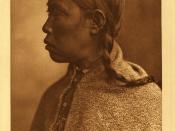The Lummi Indians were a Pacific Northwest Native American tribe, which hold permanent heritage in our land's history. These people reside in the rainy northern part of Washington, near the towns of Blair and Bellingham. Before European colonists came to America, the Lummi spread across the San Juan Islands, Lummi peninsula, Point Francis, Lummi Island, and sporadic places along the Lummi and Nooksack rivers.
Since the Lummi tribe lives in western Washington, and had easy access to the Pacific, fish was their major food source. They designed the reef net, the weir, and the purse seine. They had a sacred relationship with salmon, conceivably because this was there source of life. Dams and water pollution have drastically altered and declined the salmon population. Because of this the Lummi's old way of life has been tainted. In the springtime the Lummi netted herring spawn and used them for bait to capture fowl.
Camas root was yet another food source for this tribe. Berries, Fruits, elk, deer, clams, and mountain goats were also food sources for the Lummi Indians.
The Lummi lived in a moderately climatized area but none the less, winters were cold and summers warm. So in the warmer parts of the year men wore breedclothes of tannish leather or even cedar bark! Full out nudity was also a common scene. The men in the tribe also wore aprons. When the weather turned a bit cooler, men wore leather shirts and leggings made from skins. Women dressed in skirts, which were knee length, and occasionally capes made of cedar bark. Buckskin garments were also worn on occasion by both men and women, but impractical due to the high precipitation. The Lummi Indians usually went barefoot, although moccasins were available. Their winter-wear was composed of otter and bearskins, or...


